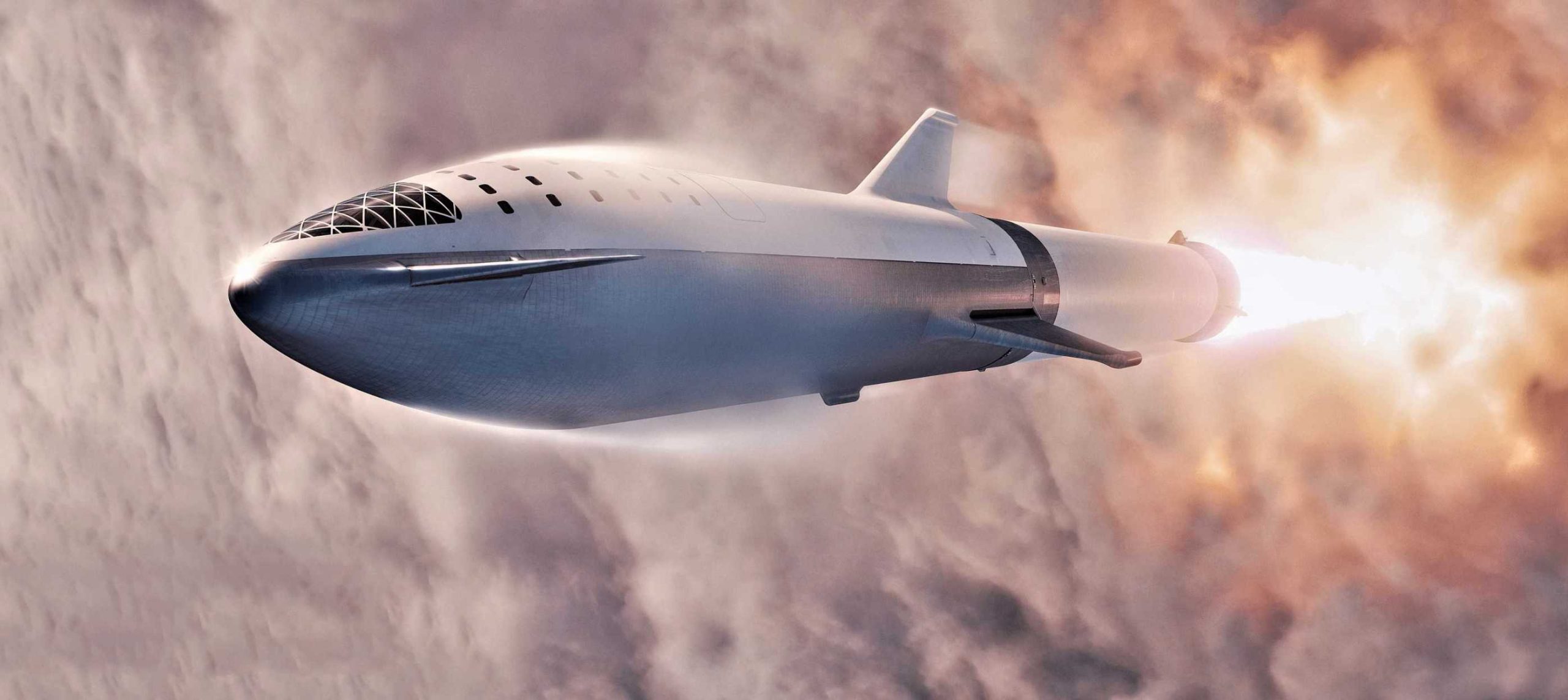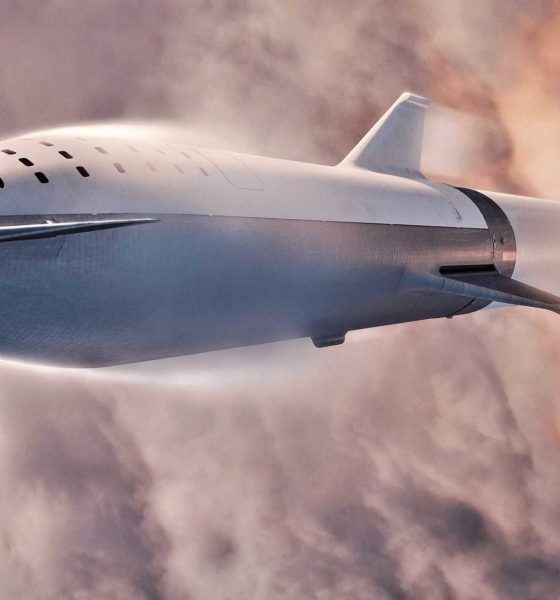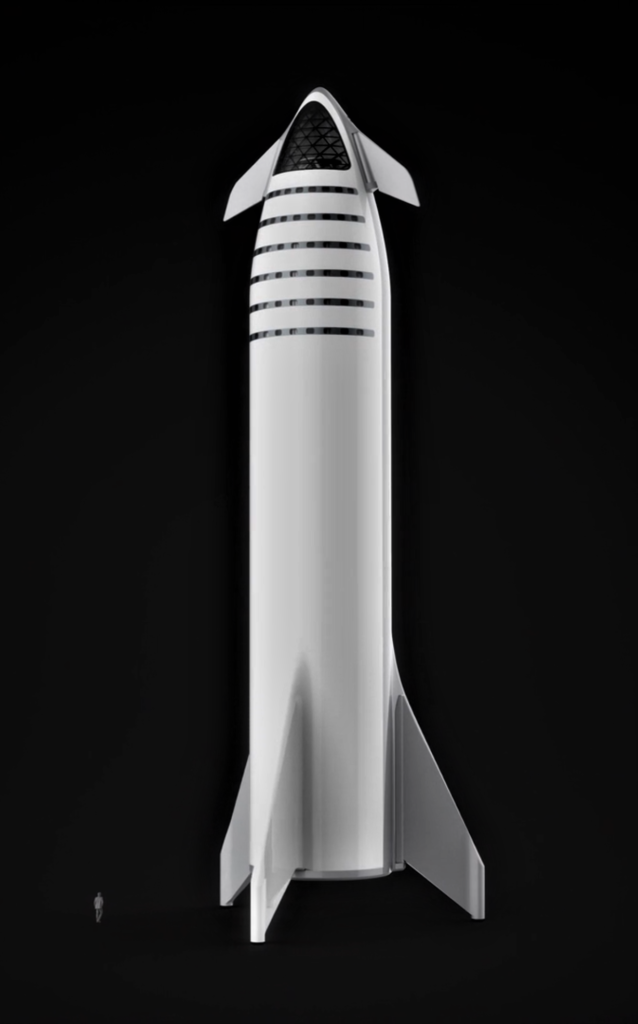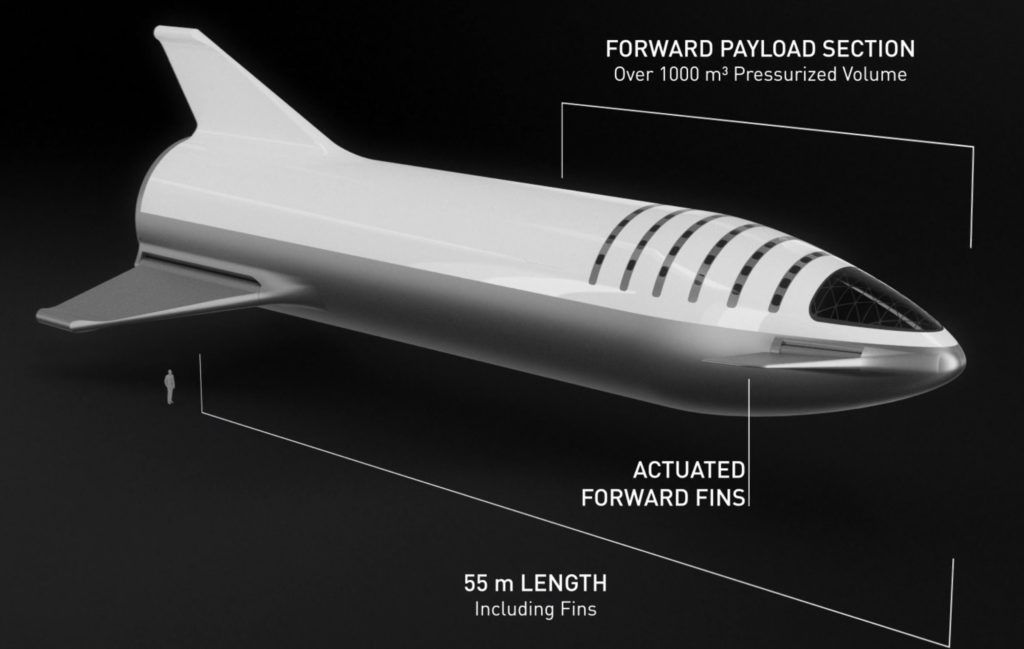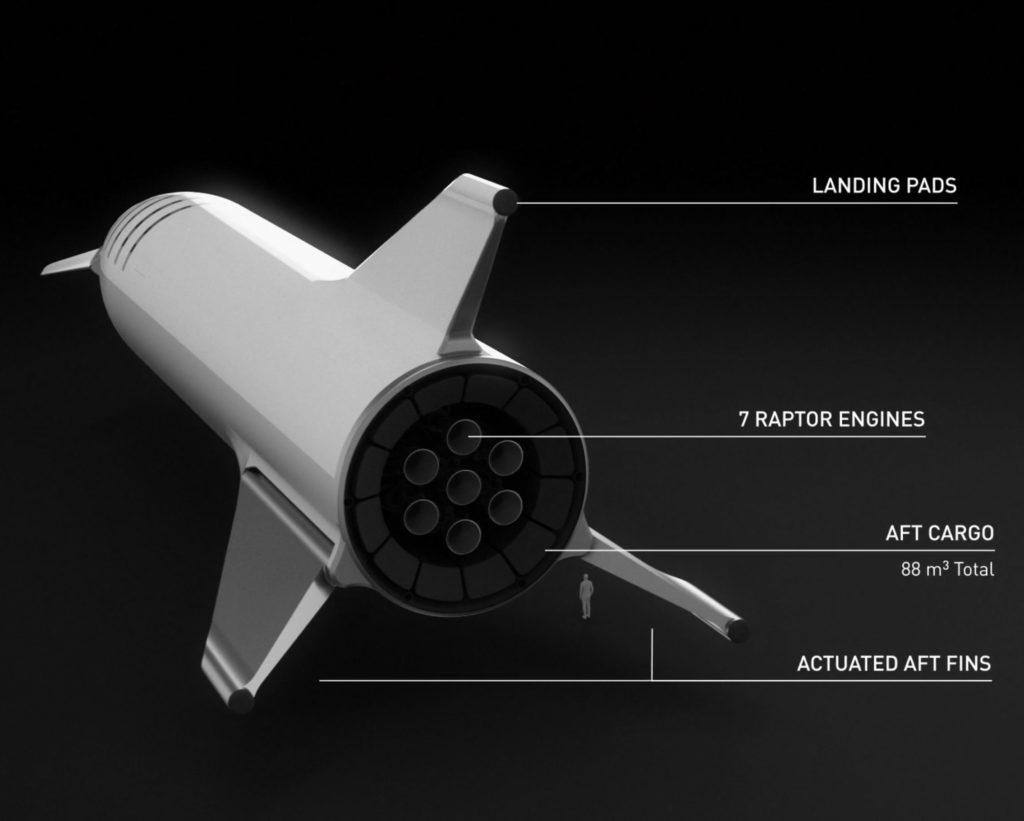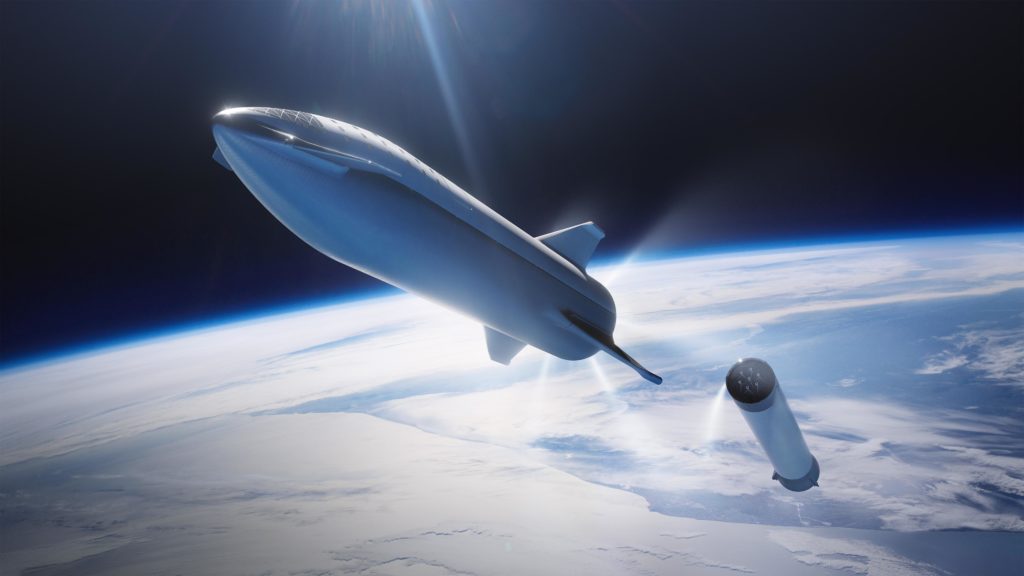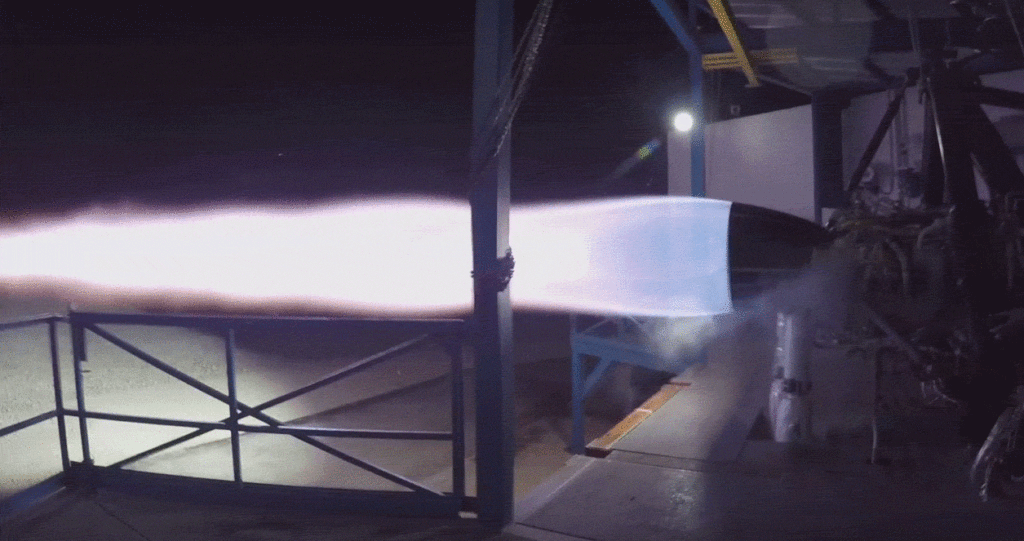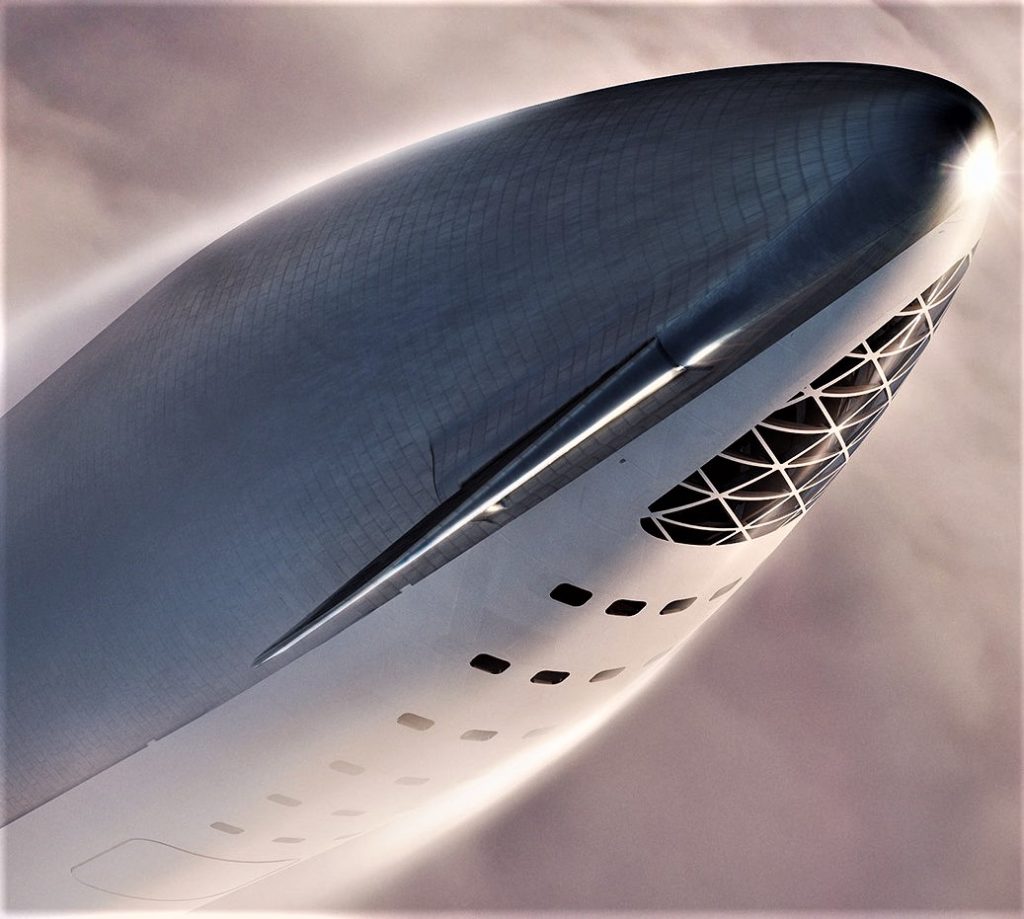SpaceX has confirmed that the two large propellant tanks now present at its Boca Chica, Texas facilities will likely to be the last major ground tanks needed to enable the first test flights of the upper stage of its next-gen BFR rocket, known as the Big Falcon Spaceship (BFS).
Expected to begin as soon as late 2019, SpaceX executives have recently reiterated plans for a campaign of hop tests for the first full-scale spaceship prototype, in which the ship will follow in the footsteps of its Falcon 9-based Grasshopper and F9R predecessors.
https://twitter.com/krgv_mike/status/1055748966619537408
In a comment provided to a number of local outlets, SpaceX Communications Specialist Sean Pitt stated this about the recent arrival of a second large propellant storage tank at the company’s prospective South Texas test and launch facilities.
“The ongoing construction of our launch pad in South Texas is proceeding well. SpaceX has now received the final major ground system tank needed to support initial test flights of the Big Falcon Spaceship.” – Sean Pitt, SpaceX
While there may have been some slight uncertainty before, this official statement confirms beyond the shadow of a doubt that SpaceX is actively and rapidly preparing its South Texas property for a future of BFR-related tests, spaceship hops, and perhaps even launches.
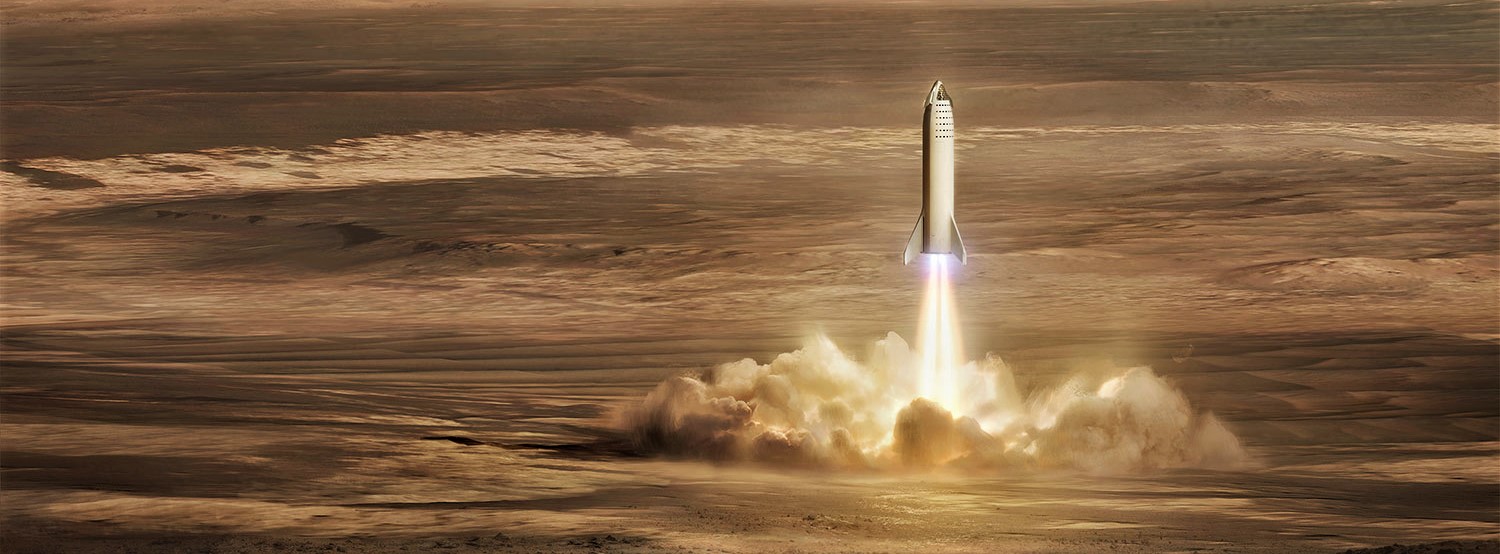
Same dance, different hops
Unlike Falcon 9’s Grasshopper and F9R reusability development programs, SpaceX’s BFS hop test campaign is likely going to be much more aggressive in order to gather real flight-test data on new technologies ranging from unfamiliar aerodynamic control surfaces (wings & fins vs. grid fins), all-composite propellant tanks (Falcon uses aluminum-lithium), a 9m-diameter vehicle versus Falcon’s 3.7m, a massive tiled heat-shield likely to require new forms of thermal protection, and entirely new regimes of flight (falling like a skydiver rather than Falcon 9’s javelin-style attitude) – to name just a handful.
To fully prove out or at least demonstrate those new technologies, BFS hop testing is likely to be better described as “flight testing”, whereby the spaceship launches vertically but focused primarily on regimes where horizontal velocity is far more important than vertical velocity.
“But by ‘hopper test,’ I mean it’ll go up several miles and then come down. The ship will – the ship is capable of a single stage to orbit if you fully load the tanks. So we’ll do flights of increasing complexity. We really want to test the heat shield material. So I think we’ll fly out, turn around, accelerate back real hard and come in hot to test the heat shield because we want to have a highly reusable heat shield that’s capable of absorbing the heat from interplanetary entry velocities, which is really tricky.” – CEO Elon Musk, October 2017
Focusing on the important things (for fully-reusable rockets)
SpaceX does has significant familiarity with the general style of testing expected to be used to prove out its next-gen spaceship, a major department from anything the company has yet built or flown. Updated in September 2018 by CEO Elon Musk, the craft’s most recent design iteration is reportedly quite close to being finalized. That near-final design prominently features a trio of new aft fins (two able to actuate as control surfaces), two forward canards, and an updated layout of seven Raptor engines.
Critically, SpaceX has decided to commonize BFR’s main propulsion, choosing to skip the performance benefits of a vacuum-optimized Raptor variant for the simplicity and expediency of exclusively using sea level Raptors on both the booster and spaceship. This decision is ultimately strategic and well-placed: rather than concerning early-stage development with the inclusion of a second major branch of onboard propulsion, the company’s engineers and technicians can place their focus almost entirely on a one-size-fits-all version of BFR with plenty of room for upgrades down the road.
- BFS seen standing vertically on the pads of its tripod fins. (SpaceX)
- (SpaceX)
- A better view. (SpaceX)
- BFR’s booster and spaceship separate a few minutes after launch. (SpaceX)
With a rocket as large as BFR and a sea level engine already as efficient as Raptor, the performance downgrade wrought by the initial removal of Raptor Vacuum (RVac) is scarcely more than a theoretical diversion. The specific performance numbers remain to be seen but will likely be greater than 100 metric tons (~220,000 lbs) to low Earth orbit (LEO). Past a certain point, however, the actual performance to LEO and beyond is almost irrelevant, at least from a perspective of individual launches. The paradigm SpaceX is clearly already interrogating is one where the cost of individual launches is so low relative to today’s expendable launch pricing ($5,000-20,000/kg to LEO) that it will almost be anachronistic to design or work with a single-launch-limit in mind, a limit that is just shy of a natural law in the spaceflight industries of today.
Because SpaceX has already demonstrated expertise in vertically launching, landing, and generally controlling large rockets, the main challenges faced with BFR are more operational than purely technical. To be clear, the technical challenges are still immense, but successfully solving those challenges by no means guarantees that the aircraft-like operational efficiency needed for BFR to succeed can or will be fully realized.
- A gif of Raptor throttling over the course of a 90+ second static-fire test in McGregor, Texas. (SpaceX)
- SpaceX’s subscale Raptor engine has completed more than 1200 seconds of testing in less than two years. (SpaceX)
- A closeup of BFS’ nose section, featuring impressively varied tile-sizes, joining methods, and extremely precise curves on the interface between canard wings and the hull. (SpaceX)
In 2016, Musk pegged SpaceX’s cost goals for a BFR-style fully-reusable rocket at less than $1M per launch for booster and spaceship maintenance alone, or $3.3M per launch with amortization (paying for the debt/investment incurred to fund BFR’s development) and propellant estimates included. To realize those ambitious costs, SpaceX will effectively have to beat the expendable but similarly-sized Saturn V’s per-launch costs (~$700M) by a factor of 100 to 200 – more than two orders of magnitude – and SpaceX’s own Falcon 9 and Heavy launch costs (~$55M to $130M) by 20-50X.
To even approach those targets, SpaceX will need to learn how to launch Falcon and BFR near-autonomously with near-total and refurbishment-free reusability, while also developing and demonstrating orbital refueling capabilities that do not currently exist and rapidly maturing large-scale composite tankage and structures. None of those things require Raptor Vacuum.
For prompt updates, on-the-ground perspectives, and unique glimpses of SpaceX’s rocket recovery fleet check out our brand new LaunchPad and LandingZone newsletters!

News
Tesla dispels reports of ‘sales suspension’ in California
“This was a “consumer protection” order about the use of the term “Autopilot” in a case where not one single customer came forward to say there’s a problem.
Sales in California will continue uninterrupted.”

Tesla has dispelled reports that it is facing a thirty-day sales suspension in California after the state’s Department of Motor Vehicles (DMV) issued a penalty to the company after a judge ruled it “misled consumers about its driver-assistance technology.”
On Tuesday, Bloomberg reported that the California DMV was planning to adopt the penalty but decided to put it on ice for ninety days, giving Tesla an opportunity to “come into compliance.”
Tesla enters interesting situation with Full Self-Driving in California
Tesla responded to the report on Tuesday evening, after it came out, stating that this was a “consumer protection” order that was brought up over its use of the term “Autopilot.”
The company said “not one single customer came forward to say there’s a problem,” yet a judge and the DMV determined it was, so they want to apply the penalty if Tesla doesn’t oblige.
However, Tesla said that its sales operations in California “will continue uninterrupted.”
It confirmed this in an X post on Tuesday night:
This was a “consumer protection” order about the use of the term “Autopilot” in a case where not one single customer came forward to say there’s a problem.
Sales in California will continue uninterrupted.
— Tesla North America (@tesla_na) December 17, 2025
The report and the decision by the DMV and Judge involved sparked outrage from the Tesla community, who stated that it should do its best to get out of California.
One X post said California “didn’t deserve” what Tesla had done for it in terms of employment, engineering, and innovation.
Tesla has used Autopilot and Full Self-Driving for years, but it did add the term “(Supervised)” to the end of the FSD suite earlier this year, potentially aiming to protect itself from instances like this one.
This is the first primary dispute over the terminology of Full Self-Driving, but it has undergone some scrutiny at the federal level, as some government officials have claimed the suite has “deceptive” naming. Previous Transportation Secretary Pete Buttigieg was vocally critical of the use of the name “Full Self-Driving,” as well as “Autopilot.”
News
New EV tax credit rule could impact many EV buyers
We confirmed with a Tesla Sales Advisor that any current orders that have the $7,500 tax credit applied to them must be completed by December 31, meaning delivery must take place by that date. However, it is unclear at this point whether someone could still claim the credit when filing their tax returns for 2025 as long as the order reflects an order date before September 30.
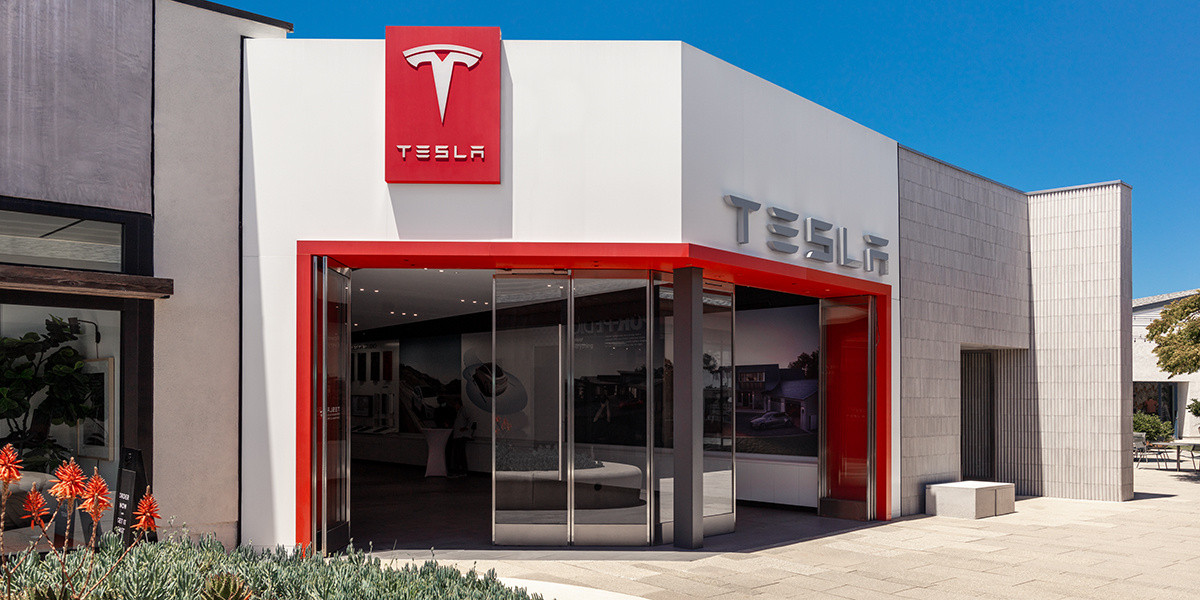
Tesla owners could be impacted by a new EV tax credit rule, which seems to be a new hoop to jump through for those who benefited from the “extension,” which allowed orderers to take delivery after the loss of the $7,500 discount.
After the Trump Administration initiated the phase-out of the $7,500 EV tax credit, many were happy to see the rules had been changed slightly, as deliveries could occur after the September 30 cutoff as long as orders were placed before the end of that month.
However, there appears to be a new threshold that EV buyers will have to go through, and it will impact their ability to get the credit, at least at the Point of Sale, for now.
Delivery must be completed by the end of the year, and buyers must take possession of the car by December 31, 2025, or they will lose the tax credit. The U.S. government will be closing the tax credit portal, which allows people to claim the credit at the Point of Sale.
🚨UPDATE: $7,500 Tax Credit Portal “Closes By End of Year”.
This is bad news for pending Tesla buyers (MYP) looking to lock in the $7,500 Tax Credit.
“it looks like the portal closes by end of the year so there be no way for us to guarantee the funds however, we will try our… pic.twitter.com/LnWiaXL30k
— DennisCW | wen my L (@DennisCW_) December 15, 2025
We confirmed with a Tesla Sales Advisor that any current orders that have the $7,500 tax credit applied to them must be completed by December 31, meaning delivery must take place by that date.
However, it is unclear at this point whether someone could still claim the credit when filing their tax returns for 2025 as long as the order reflects an order date before September 30.
If not, the order can still go through, but the buyer will not be able to claim the tax credit, meaning they will pay full price for the vehicle.
This puts some buyers in a strange limbo, especially if they placed an order for the Model Y Performance. Some deliveries have already taken place, and some are scheduled before the end of the month, but many others are not expecting deliveries until January.
Elon Musk
Elon Musk takes latest barb at Bill Gates over Tesla short position
Bill Gates placed a massive short bet against Tesla of ~1% of our total shares, which might have cost him over $10B by now
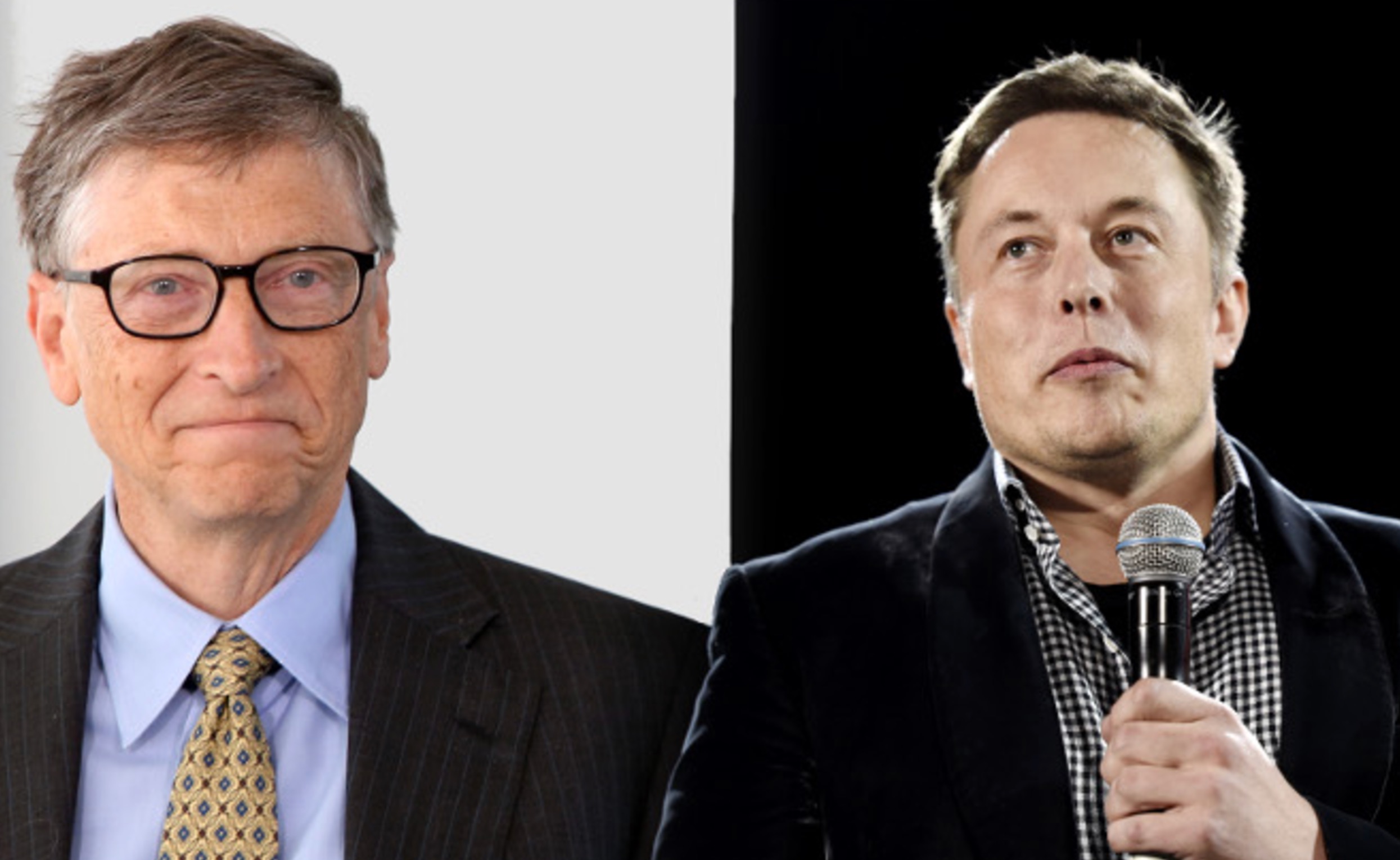
Elon Musk took his latest barb at former Microsoft CEO Bill Gates over his short position against the company, which the two have had some tensions over for a number of years.
Gates admitted to Musk several years ago through a text message that he still held a short position against his sustainable car and energy company. Ironically, Gates had contacted Musk to explore philanthropic opportunities.
Elon Musk explains Bill Gates beef: He ‘placed a massive bet on Tesla dying’
Musk said he could not take the request seriously, especially as Gates was hoping to make money on the downfall of the one company taking EVs seriously.
The Tesla frontman has continued to take shots at Gates over the years from time to time, but the latest comment came as Musk’s net worth swelled to over $600 billion. He became the first person ever to reach that threshold earlier this week, when Tesla shares increased due to Robotaxi testing without any occupants.
Musk refreshed everyone’s memory with the recent post, stating that if Gates still has his short position against Tesla, he would have lost over $10 billion by now:
Bill Gates placed a massive short bet against Tesla of ~1% of our total shares, which might have cost him over $10B by now
— Elon Musk (@elonmusk) December 17, 2025
Just a month ago, in mid-November, Musk issued his final warning to Gates over the short position, speculating whether the former Microsoft frontman had still held the bet against Tesla.
“If Gates hasn’t fully closed out the crazy short position he has held against Tesla for ~8 years, he had better do so soon,” Musk said. This came in response to The Gates Foundation dumping 65 percent of its Microsoft position.
Tesla CEO Elon Musk sends final warning to Bill Gates over short position
Musk’s involvement in the U.S. government also drew criticism from Gates, as he said that the reductions proposed by DOGE against U.S.A.I.D. were “stunning” and could cause “millions of additional deaths of kids.”
“Gates is a huge liar,” Musk responded.
It is not known whether Gates still holds his Tesla short position.
